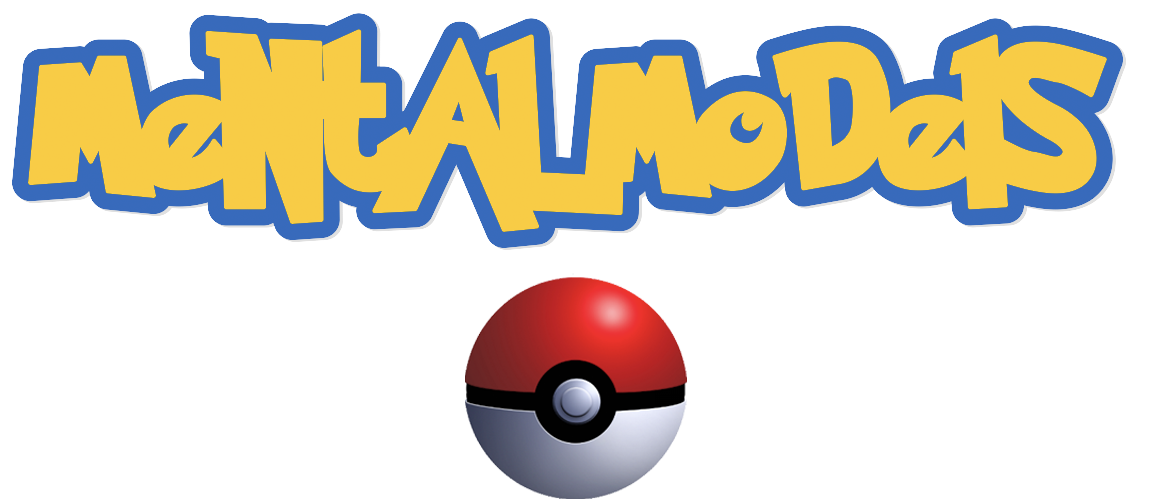This is Part IX of the Specificity Sequence
I've recently noticed a lot of smart people publishing lists of mental models. They're apparently having a moment:
- Mental Models: The Best Way to Make Intelligent Decisions by Shane Parrish
- Mental Models I Find Repeatedly Useful and Super Thinking: The Big Book of Mental Models by Gabriel Weinberg and Lauren McCann
- Mental Models: Learn How to Think Better and Gain a Mental Edge by James Clear
- Mental Models by Julian Shapiro
- A Lesson on Elementary Worldly Wisdom, a 1994 talk by Charlie Munger about how he and Warren Buffet use a “latticework of models” to understand the world and make good investments. A couple decades early to the current party, but still.
There are hundreds of useful mental models to learn, such as “leverage”, “social proof”, “seizing the middle”, and of course, “mental model”. I want to help you be the very best, searching far and wide, teaching your brain to understand the power that’s inside.

Gotta Catch ’Em All
We’ve been focusing nonstop on one (super)powerful mental model called the “ladder of abstraction”, and seen it prove useful in a surprising variety of unrelated domains. The best mental models are the ones that have the largest number of applicability domains while also being the simplest and most compact. 😎
But despite all its usefulness, the ladder of abstraction doesn’t appear in any list of mental models I’ve seen to date. The closest it’s gotten is probably this entry from Farnam Street’s list in the "Military & War" section:
Seeing the Front
One of the most valuable military tactics is the habit of “personally seeing the front” before making decisions — not always relying on advisors, maps, and reports, all of which can be either faulty or biased.
Yes, advisors and maps and reports that tell you the reality on the ground may be “faulty or biased”, but there’s an even more fundamental problem: Their whole job is to slide the ground truth up the ladder of abstraction.
A report tells you that your enemy’s troops on the battlefield outnumber yours 2-to-1. Sounds like you should retreat, right? Not so fast. Let’s slide that down the ladder of abstraction by filling in more detail.

Rain clouds are gathering in the sky? The report might have neglected to mention that detail. When you realize it’s going to rain, you might think of a clever strategy that uses the rain to your advantage.
“Seeing the front” is an instance of “sliding down the ladder of abstraction”: you replace an abstract summarization of observations of the front with a lower-level data dump about the front (which happens to come from your own senses).
“Seeing the front” is absolutely a useful mental model to know; so are others like “Value Prop Story” and "mind-anchor". But “ladder of abstraction” is even more useful because it lets you derive these and a bunch of other mental models for yourself.
Next post: The Power to Draw Better